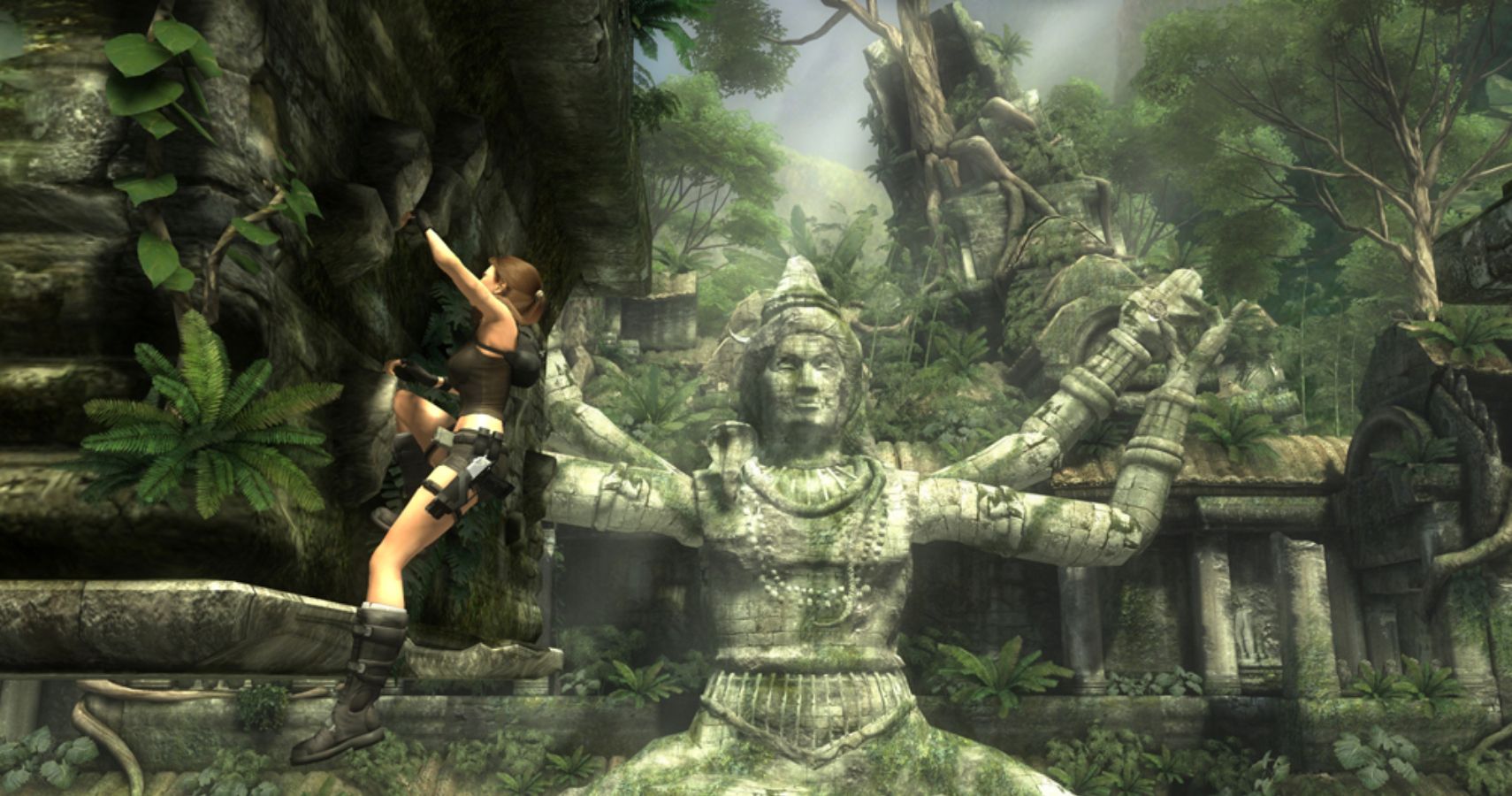Remember Tomb Raider Underworld? The eighth installment of the beloved Tomb Raider series, which has since been a little bit forgotten about? Turns out that game was somewhat of a big deal in the field of AI research and large-scale data analysis in gaming.
Crystal Dynamic developed Underworld which released way back in 2008 (can you believe that?) as somewhat of a reboot for the series. It was the reboot before the next (critically-acclaimed) reboot of Tomb Raider in 2013. It's a super game which sees Lara Croft globetrotting her way into the gaping mouths of various otherworldly underworlds in a determined effort to uncover what really happened to her mother those many years ago.
Along with being accepted with open arms by fans and critics alike - who on the whole awarded the game with some more-than-decent reviews - Underworld served its own purpose for game researchers too. It provided one of first attempts at analyzing player performance in a AAA video game using large-scale data collection and artificial intelligence.
A Research Question
The question that said researchers wanted to get to the bottom of was simple on the surface: do players play games the way the games' designers expect them to? But of course, as one might imagine there are so many layers to any solution to this question, seeing as these are humans we're talking about. And humans are somewhat complex.
Although a love of games unites a great deal of people in our world, there are obviously a million million ways in which we gamers differ. Say, in terms of the games we love, how we love to play them, and what we dislike in a game. Of course, any one game will generally be targeted towards a smaller subsection of the sprawlingly huge gaming community, but there also seems to be a growing effort to make games as inclusive and accommodating for as many gamers as possible. And that means gaining insight into how different kinds of players play.
Tomb Raider's Four Player Types
Underworld was a great playground for researchers to, well, play with. It was a fresh take on an old franchise, and thus provided a good opportunity to study whether or not its reimaginings were gelling with players as expected. Researchers specifically wanted to see how audiences were interacting with the game post-release, once it was out there "in the wild."
Researchers such as Anders Drachen and Alessandro Canossa drew on a large pool of data collected from Underworld players, including information on where, when, how, and how frequently players die, as well as how much time they spend in different areas of the game. Such info would be helpful to any developers who are interested in identifying potentially problematic areas of a game that may be too challenging, or not challenging enough. This still isn't anything to do with AI though.
But then the researchers furthered this work by chasing up the possibility of drawing on machine learning algorithms to try learn more about the players' behavior when playing Underworld. Data for the total number of deaths, cause of death, level completion time, and the use of the help-on-demand feature were extracted, and with the help of Emergent Self-Organizing Maps - a kind of artificial neural network - they settled upon four clusters of player types: runners, solvers, veterans, and pacifists.
As you might expect, these four player types that were visualized nice and clearly thanks to this AI could prove interesting to developers as a means of automatically whittling down the masses of data and player feedback typically acquired in a manual capacity via playtesting, for example.
Can AI Predict Player Behavior?
So the next obvious question was, "can we get AI to predict how these player types will engage with this game? And when they will cease to engage with it?" Follow up research entailed the training of two AI predictor systems using player data from only the first two levels of Underworld, in order to predict when players would stop playing the game (i.e., presumably if they get too bored of it, or frustrated).
Indeed, these researchers found that the AI they deployed was able to predict which level of Underworld was going to be the final level a given player would bother finishing. It did so with almost 50% accuracy using data from only the very first segment of time spent on the boat at the start of game. This accuracy increased to almost 80% with the inclusion of data from the game's second level. And that's pretty neat.
There's obviously much more depth to these studies' findings than this post would allow, but this ought to give a decent enough peek into these fascinating research efforts that were going on behind the scenes 12 years ago. Despite its relatively modest reputation in the greater gaming landscape, Tomb Raider Underworld in fact gave way to one of the most seminal bodies of work about what can be learnt from players, and the role of AI therein.
Source: AI and Games



